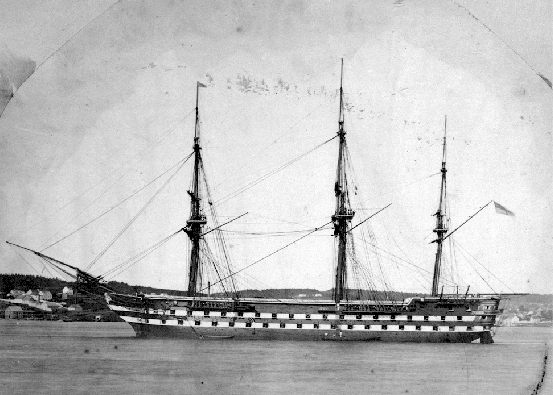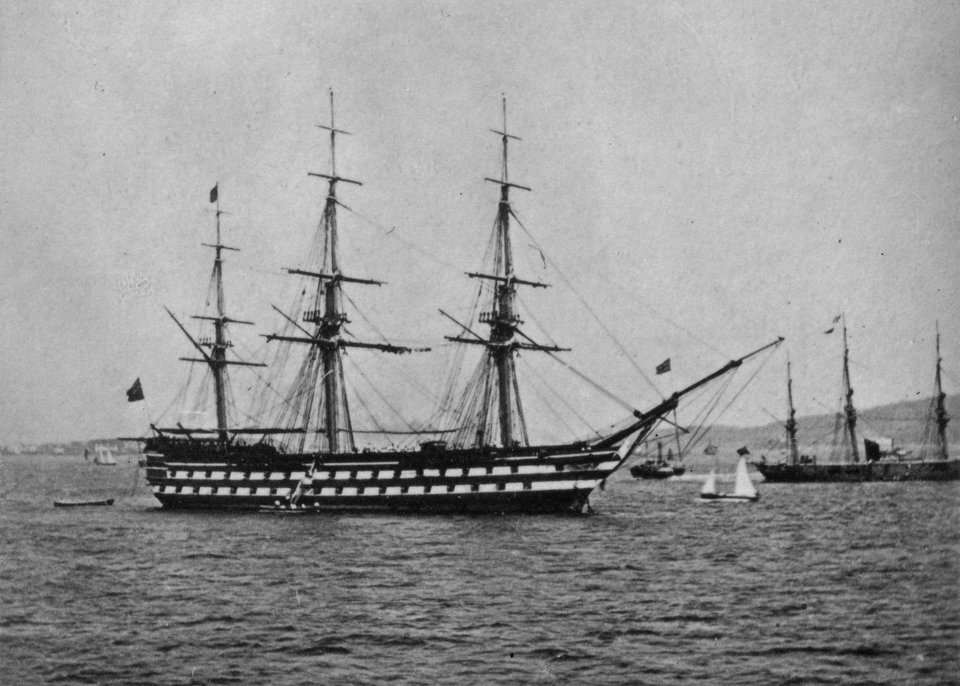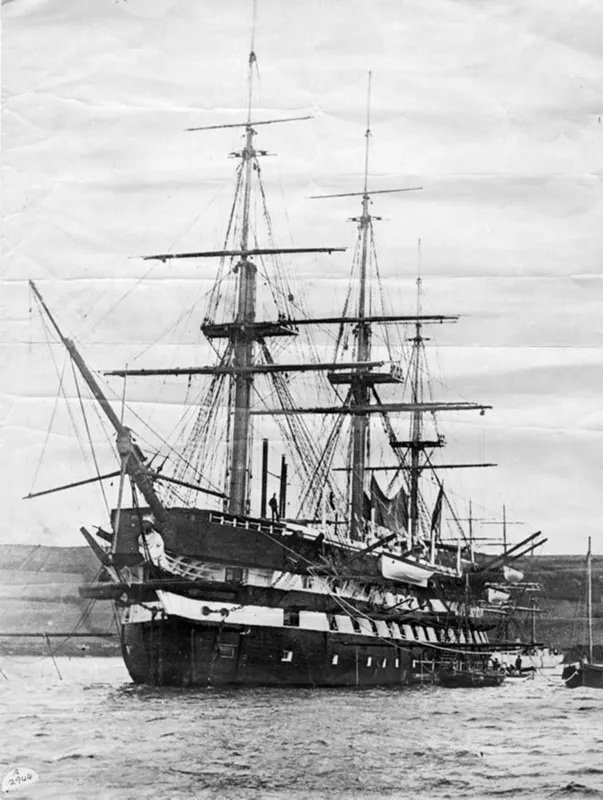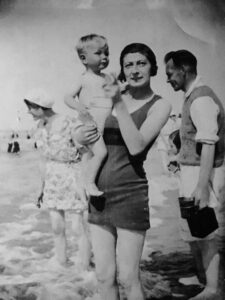George joined the Royal Navy on 6 March 1854 when aged just 14. He was described as 4 feet 8 inches tall and weighing 76 lbs with a fair complexion, reddish hair, grey eyes, and freckles. He was given service number 10332 and committed for a period of ten years from the age of 18. His first posting was to HMS Royal William as a Boy Second Class. Launched as a 120-gun first rate ship of the line in 1825, it had recently returned from participation in the Crimean War to serve as guard ship for Devonport Dockyard. George was transferred to HMS Calypso in July, where he remained for the next year. This was a small sixth-rate ship under the command of Captain Arthur Forbes and was serving on the North America and West Indies station and was likely a fantastic experience for a poor boy from Woolwich.
He joined the crew of HMS Ganges in July 1855 and served with them for the next six years. Ganges was a much larger 84-gun second-rate ship of the line that had been launched some 24 years earlier. Warships of this time would have been familiar to a sailor of 200 years before – large wooden sailing ships armed with rows of cannon. With both sides dependent on the wind for propulsion, battles were fought with two columns of opposing warships exchanging fire with the cannons along their broadsides. The opponent with the most firepower typically had the advantage. Ganges was a second-rate, i.e. the second largest class of warships based on size and firepower.
From 1857 to 1861, Ganges was the flagship of the Pacific Station based at Valparaíso, Chile under the command of Rear Admiral Robert Lambert Baynes. They also spent considerable time based at the Esquimalt Royal Navy Dockyard in Vancouver, Canada. Part of her duties whilst in the Pacific was to survey Salt Spring Island to the south of the city, where the principal town is still called Ganges and several areas and roads are named after the ship and its crew.
George was promoted to Boy First Class in 1857 and to Ordinary Seaman in 1858 upon turning 18. He was captured onboard on the night of the 1861 census, at which point the ship was at latitude 34.50 N and longitude 35.4 W, which was almost in the centre of the North Atlantic Ocean as it returned home, having sailed over 60,100 miles since leaving England. Ganges was the last wooden ship of the line to fly an admiral’s flag at sea. It was laid up at Sheerness upon its return before becoming a training ship, being used until 1923.

George then joined HMS Edgar in May 1861, another 91-gun second rate that was commanded by Captain George Pechell Mends and flagship of Rear-Admiral John Elphinstone Erskine, second-in-command of the Channel Squadron – created as a rapid response force against the French. The movements of the ship on a visit to Ireland in May and June 1861 were well reported in The Times, although curiously this was when George married Elizabeth. He was evidently not onboard.

George was promoted to Able Seaman in February 1862, and in July joined his final ship, HMS Cumberland, a 70-gun third rate ship of the line that was serving as guard ship of the steam reserve at Sheerness. The Royal Navy began to transition from the age of sail to the age of steam and George became a stoker in September 1863 – spending long hours shovelling coal into the furnaces.
He left the Royal Navy on 20 December 1864 after completing his 10 years’ service (although less than the 10 years from the age of 18 that he signed on for). His conduct had been described as good or very good throughout his career.
Ships
- HMS Royal William (1854)
- HMS Calypso (1854-1855)
- HMS Ganges (1856-1861)
- HMS Edgar (1861-1862)
- HMS Cumberland (1862)


